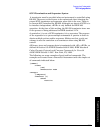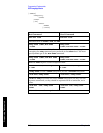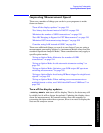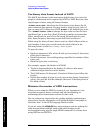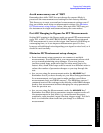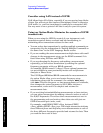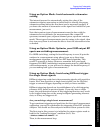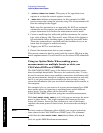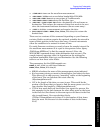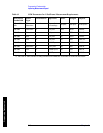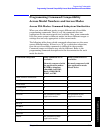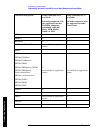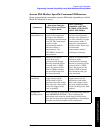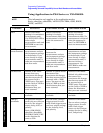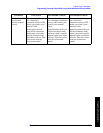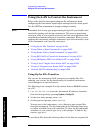
Chapter 6 517
Programming Fundamentals
Improving Measurement Speed
Programming Fundamentals
• :CONF:WAV? turns on the waveform measurement
• :WAV:BAND 300khz sets a resolution bandwidth of 300 kHz
• :WAV:SWE:TIME 5ms sets a sweep time of 5 milliseconds
• :WAV:BAND:TYPE FLAT selects the flat filter type
• :WAV:DEC 4;DEC:STAT ON selects a decimation of 4 and turns on
decimation. This reduces the amount of data that needs to be sent
since the instrument hardware decimates (throws some away).
• :INIT to initiate a measurement and acquire the data
• CALC:DATA2:COMP? MEAN,25us,526us,579.6us,8 to return the
desired data
There are two versions of this command depending on your firmware
revision. Earlier revisions require the optional variables be entered in
terms of their position in the trace data array. Current instruments
allowthevariablestobeenteredintermsoftime.
For early firmware revisions you need to know the sample interval. In
the waveform measurement it is equal to the aperture value. Query
:WAVeform:APERture? to find the sample interval. (Note: the
WAV:APER? command always takes decimation into account.) The
sample interval (aperture value) is dependent on the settings for
resolution bandwidth, filter type, and decimation. See the following
table to see how these value relate.
The parameters for this GSM example are:
MEAN,9,197,1730 (or with later firmware:
MEAN,25us,526us,579.6us,8)
• MEAN calculates the mean of the measurement points indicated
• 9 is how many points you want to discard before you look at the data.
This allows you to skip over any “unsettled” values at the beginning
of the burst. You can calculate this start offset by
(25µs/sampleInterval)l
• 197 is the length of the data you want to use. This would be the
portion of the burst that you want to find the mean power over. You
can calculate this length by (526µs/sampleInterval)
• 1730 is how much data you have before you repeat the process. For
this example it’s the time between the start offset point on the burst
in the first slot (first frame) to the same spot on the burst in the first
slot (second frame). You can calculate this by
(576.9µs*N/sampleInterval) where N is the number of data items
that you want. In this case it is the number of slots in the frame,
N=8.)



